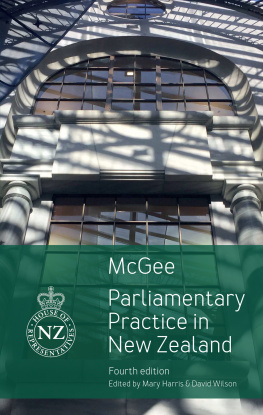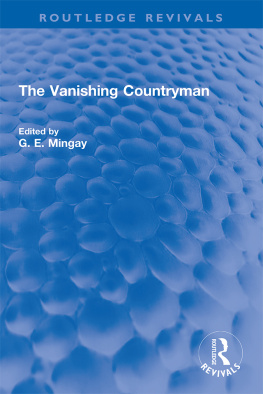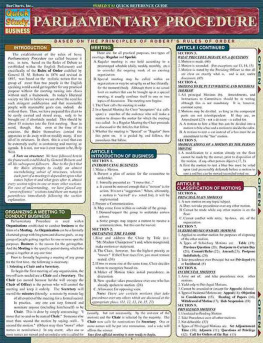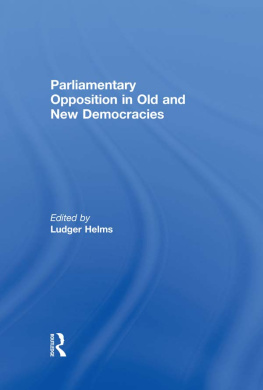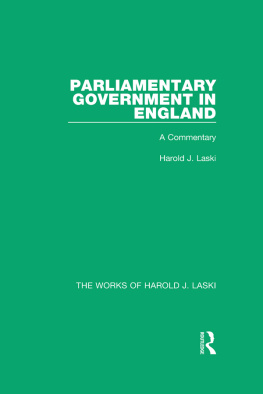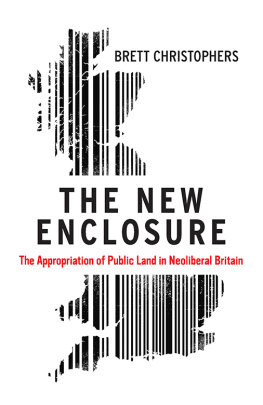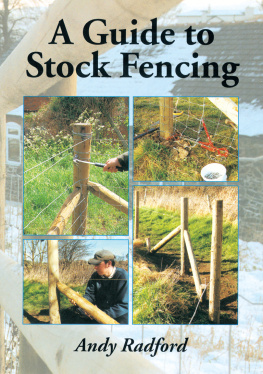First published 1997 by Addison Wesley Longman Limited
Published 20 14 by Routledge
2 Park Square, Milton Park, Abingdon, Oxon OXI 4 4RN
711 Third Avenue, New York, NY 10017, USA
Routledge is an imprint of the Taylor & Francis Group, an informa business
Addison Wesley Longm an Limited 1997
The right of G.E. Mingay to be identified as author of this Work has been asserted by him in accordance with the Copyright, Designs and Patents Act 1988.
All rights reserved; no part of this publication may be reproduced, stored in any retrieval system, or transmitted in any form or by any means, electronic, mechanical, photocopying, recording, or otherwise without either the prior written permission of the Publishers or a licence permitting restricted copying in the United Kingdom issued by the Copyright Licensing Agency Ltd, 90 Tottenham Court Road, London W1P 9HE.
ISBN 978-0-582-25725-2 (pbk)
British Library Cataloguing in Publication Data
A catalogue entry for this title is available from the British Library
Library of Congress Cataloging-in-Publication Data
Mingay, G.E.
Parliamentary enclosure in England : an introduction to its causes, incidence, and impact, 17501850 / G.E. Mingay.
p. cm.
Includes bibliographical references and index.
ISBN 0582257263 (csd). ISBN 0582257255 (ppr)
1. InclosuresEnglandHistory. 2. InclosuresGovernment policyEnglandHistory. I. Title.
HD594.6.M533 1998
This book could not have been written without the assistance of the numerous archivists who over many years provided me with a wealth of original sources. The author has benefited greatly from conversations with Dr John Chapman of the University of Portsmouth, who kindly read the first draft. Professor Alan Armstrong of the University of Kent was also kind enough to read the whole, and offered many valuable suggestions and improvements.
have been reprinted by permission of Mr Rex C. Russell.
Lastly, the author must record his debt to the late Professor J.D. Chambers, who many years ago stimulated a lasting interest in the subject.
In references place of publication is London unless specified otherwise.
Towards the close of the nineteenth century there was an upsurge of public interest in matters concerning the countryside. Some of this new attention was due to economic circumstances, arising especially from the depression which affected much of English farming in the last quarter of the century. But other elements had a social origin, centring on the conditions, particularly the housing, of the farm-worker, his poor living standards, his complete dependence on his low wages, his lack of education and, generally, lack of prospects. Contemporary observers could not help but notice the fact that the agrarian structure of England was markedly different from that which dominated large parts of continental Europe. The publication of the first comprehensive statistics on English farming reinforced the observation, and curiosity was stimulated into why the peasant or small family farmer was relatively scarce over large areas of the English countryside.
The concern with a lost peasantry was always somewhat exaggerated, for the enquiries made in 1887 and subsequent years showed that between 15 and 16 per cent of the cultivated land of England was still occupied by its owners. A more relevant figure, however, allowing for farms that because of the depression had fallen into the hands of their large owners, and allowing also for accommodation land kept by non-farming owners, was probably not above 12 per cent. The holdings statistics for 1885 were also revealing, showing that small farms of between 5 and 50 acres numbered over 200,000, and accounted for 14 per cent of the 27,700,000 acres reported on in England and Wales.1 Small farmers, even small owner-farmers, had evidently not disappeared, though perhaps it was true that they were fewer than in the past. In the 1880s historical knowledge was too limited for even an approximate answer to be given on this point.
Whatever the facts, political and social motives inspired a number of published works dealing with various aspects of the later nineteenth-century village. Some were concerned with the continued domination of large landowners, some with farm-workers conditions, and others with smallholdings a rather vain attempt to restore a peasant class to the contemporary countryside. Best known, and most soundly based, perhaps, were Seebohm Rowntree and May Kendalls, How the Labourer Lives (1913), together with the detailed survey of the (Liberal) Land Enquiry Committee, The Land, of the same year, and the response of the Land Agents Society, Facts about Land, of 1916.2
The academic strand of the controversy was primarily concerned with establishing when and how the small farmer had declined, with some historians concentrating on the period of the sixteenth and seventeenth centuries, and others on the age of the parliamentary enclosures. Among the major works were Gilbert Slaters The English Peasantry and the Enclosure of Common Fields (1907), Wilhelm Hasbachs History of the Agricultural Labourer (English translation, 1908), A.H. Johnsons The Disappearance of the Small Landowner (1909), R.H. Tawneys The Agrarian Problem in the Sixteenth Century (1912), and E.C.K. Gonners Common Land and Inclosure (1912). Some of these books, notably those by Slater and Hasbach, followed a left-wing approach to the subject emanating from Marxs view of enclosure as the agency creating a landless industrial proletariat. The works by Johnson, Tawney and Gonner, it might be said, were more balanced interpretations of available evidence.
However, undoubtedly the most widely read and influential book was that by J.L. and Barbara Hammond, The Village Labourer of 1911.3 The Hammonds in their work largely ignored other contemporary studies, and continued to do so in their later editions. It was they who established the generally accepted view of parliamentary enclosure as not only the cause of the dispossession of the peasantry but also the root cause of the rural poverty and unrest of the period. Certainly they produced a highly readable study, even if their method was somewhat flawed: in particular, they noted, but then neglected, the significance of the limited area affected by parliamentary enclosure, and they failed to observe Gonners approach in refusing to formulate simple generalisations. He purposely abstained, as he wrote, from dwelling at length on the incidents of a few cases. Such a method, while it may make things more picturesque, is misleading when the instances are few out of many thousands, and not necessarily typical.4
However, such was the influence of the Hammonds book that for long the orthodox view of parliamentary enclosure was that it was responsible for the major social problems of the later eighteenth-and early nineteenth-century countryside. Gonners work, though in sobering contrast to that of the Hammonds, and also Johnsons earlier book, made little impact on this orthodoxy, in large part because neither work was well known outside academic circles. Later attacks on the Hammonds position, from Sir John Glapham in the 1920s and Professor J.D. Chambers in subsequent years, also failed to weaken the Hammond orthodoxy, except in some degree at the rarefied level of the learned journals and university teaching.5 And it is at this level, primarily, that the controversy has continued: between those who with the benefit of more recent research continue to support a somewhat modified Hammond position, and those who, again with the advantage of greater knowledge, expand on a modified Clapham/Chambers stance.




